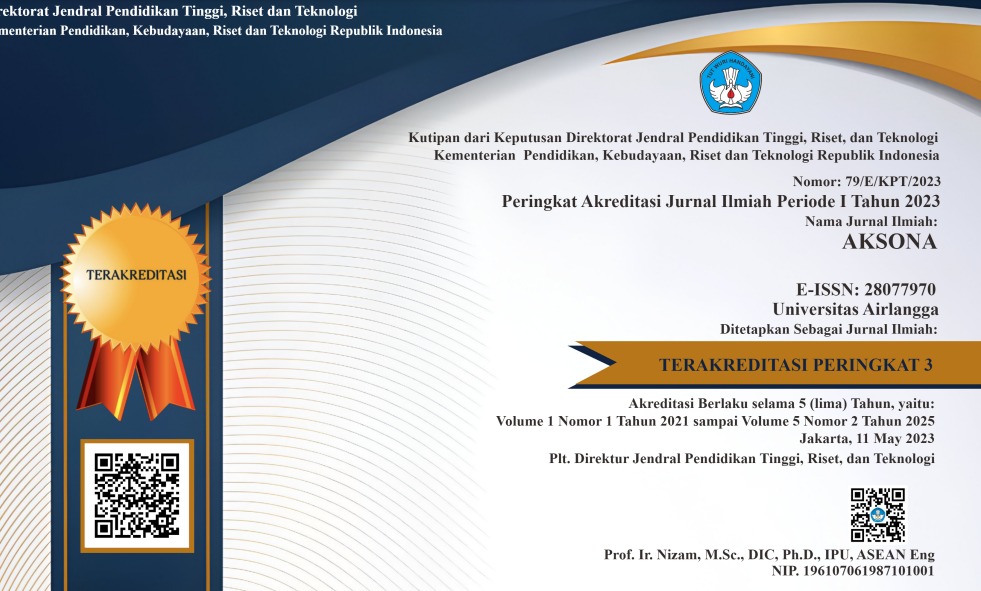Headache in Preeclampsia: Review Article
Downloads
Highlight:
- Headache in preeclampsia is classified as a type of secodary headache.
- Pregnant women with high blood pressure have a 17-fold increased risk of developing secondary headaches.
- Typical preeclampsia-related headaches are progressive, bilateral (frontal or occipital), throbbing, associated with visual abnormalities, getting worse with elevated blood pressure or exercise, and resistant to over-the-counter drugs..
ABSTRACT
Preeclampsia is a multisystem vascular disease characterized by systemic disturbances in maternal endothelial function and symptoms such as arterial hypertension and organ dysfunction, including the kidneys, liver, and brain. A headache is defined as pain or discomfort localized in the head region. Pregnancy-related headaches may have primary causes, such as migraines, but they can also indicate potentially life-threatening secondary causes, including preeclampsia. Pregnant women with high blood pressure have a 17-fold increased risk of developing secondary headaches. Headaches associated with preeclampsia can adversely affect pregnancy and labor, increasing the risk of complications. Preeclampsia headaches can predict eclampsia or seizures 56% sensitivity and 83% specificity. According to research conducted in Indonesia, the majority of preeclampsia patients experienced severe headaches (65.2%), followed by moderate (19.6%), mild (13%), and no headaches (2.2%). Therefore, based on the existing literature, this article intends to compile scientific data on headache pain in preeclampsia patients.
Filler L, Akhter M, Nimlos P. Evaluation and Management of the Emergency Department Headache. Semin Neurol. 2019; 39(1):20–6. doi: 10.1055/s-0038-1677023
Hidayati HB. The clinician's approach to the management of headache. MNJ (Malang Neurology Journal). 2016; 2(2):89–97. doi: 10.21776/ub.mnj.2016.002.02.7
Raffaelli B, Siebert E, Körner J, Liman T, Reuter U, Neeb L. Characteristics and diagnoses of acute headache in pregnant women – a retrospective cross-sectional study. J Headache and Pain. 2017; 18(1):114. doi: 10.1186/s10194-017-0823-1
Schäffer L. Präeklampsie: neue Definitionen. Praxis (Bern 1994). 2018; 107(24):1333–7. doi: 10.1024/1661-8157/a003100
Robbins MS, Farmakidis C, Dayal AK, Lipton RB. Acute headache diagnosis in pregnant women: A hospital-based study. Neurology. 2015; 85(12):1024–30. doi: 10.1212/WNL.0000000000001954
Larasati CU. Gambaran derajat nyeri kepala pada pasien preeklampsia berat di Rsud Al-Ihsan Dan Rsau Salamun Bandung periode Maret-Mei Tahun 2016. 2016 [Thesis]
Hastie R, Brownfoot FC, Cluver CA, Walker SP, Hesselman S, Tong S, et al. Predictive value of the signs and symptoms preceding eclampsia: A systematic review. Obstet Gynecol. 2019; 134(4):677–84. doi: 10.1097/AOG.0000000000003476
International Association for the Study of Pain. IASP announces revised definition of pain. 2020. [Web page]
Haryani S, Tandy V, Vania A, Barus J. Penatalaksanaan nyeri kepala pada layanan primer. Callosum Neuro J. 2018; 1(3):83–90. doi: 10.29342/cnj.v1i3.16
Peng W, Lauche R, Frawley J, Sibbritt D, Adams J. Utilization of complementary and alternative medicine and conventional medicine for headache or migraine during pregnancy: A cross-sectional survey of 1,835 pregnant women. Complement Ther Med. 2018; 41:192–5. doi: 10.1016/j.ctim.2018.09.027
Gestational hypertension and preeclampsia: ACOG practice bulletin, Number 222. Obstet Gynecol. 2020; 135(6):e237–260. doi: 10.1097/AOG.0000000000003891
Raffaelli B, Neeb L, Israel-Willner H, Körner J, Liman T, Reuter U, et al. Brain imaging in pregnant women with acute headache. J Neurol. 2018; 265(8):1836–43. doi: 10.1007/s00415-018-8924-6
Wells RE, Turner DP, Lee M, Bishop L, Strauss L. Managing migraine during pregnancy and lactation. Curr Neurol Neurosci Rep. 2016; 16(4):40. doi: 10.1007/s11910-016-0634-9
Jamieson DG, Cheng NT, Skliut M. Headache and acute stroke. Curr Pain Headache Rep. 2014; 18(9):444. doi: 10.1007/s11916-014-0444-1
Robbins MS. Headache in pregnancy. Continuum (Minneap Minn). 2018; 24(4):1092–107. doi: 10.1212/CON. 0000000000000642
Crovetto F, Somigliana E, Peguero A, Figueras F. Stroke during pregnancy and pre-eclampsia. Curr Opin Obstet Gynecol. 2013; 25(6):425-32. doi: 10.1097/GCO.0000000000000024
Sperling JD, Dahlke JD, Huber WJ, Sibai BM. The role of headache in the classification and management of hypertensive disorders in pregnancy. Obstet Gynecol. 2015; 126(2):297-302. doi: 10.1097/AOG.0000000000000966
Ives CW, Sinkey R, Rajapreyar I, Tita ATN, Oparil S. Preeclampsia—Pathophysiology and clinical presentations: JACC State-of-the-Art review. J Am Coll Cardiol. 2020; 76(14):1690–702. doi: 10.1016/j.jacc.2020.08.014
Basit S, Wohlfahrt J, Boyd HA. Pre-eclampsia and risk of dementia later in life: Nationwide cohort study. BMJ. 2018;363. doi: 10.1136/bmj.k4109
Siepmann T, Boardman H, Bilderbeck A, Griffanti L, Kenworthy Y, Zwager C, et al. Long-term cerebral white and gray matter changes after preeclampsia. Neurology. 2017; 88(13):1256–64. doi: 10.1212/WNL.0000000000003765
van Veen TR, Panerai RB, Haeri S, Griffioen AC, Zeeman GG, Belfort MA. Cerebral autoregulation in normal pregnancy and preeclampsia. Obstet Gynecol. 2013; 122(5):1064–9. doi: 10.1097/AOG.0b013e3182a93fb5
Postma IR, Slager S, Kremer HPH, de Groot JC, Zeeman GG. Long-term consequences of the posterior reversible encephalopathy syndrome in eclampsia and preeclampsia: A review of the obstetric and nonobstetric literature. Obstet Gynecol Surv. 2014; 69(5):287–300. doi: 10.1097/OGX.0000000000000069
Huang Q, Hu B, Han X, Yang J, Di X, Bao J, et al. Cyclosporin A ameliorates eclampsia seizure through reducing systemic inflammation in an eclampsia-like rat model. Hypertens Res. 2020; 43(4):263–70. doi: 10.1038/s41440-019-0387-3
Ciampa E, Li Y, Dillon S, Lecarpentier E, Sorabella L, Libermann TA, et al. Cerebrospinal fluid protein changes in preeclampsia. Hypertension. 2018; 72(1):219–26. doi: 10.1161/HYPERTENSIONAHA.118.11153
Grossman TB, Robbins MS, Govindappagari S, Dayal AK. Delivery outcomes of patients with acute migraine in pregnancy: A retrospective study. Headache. 2017; 57(4):605–11. doi: 10.1111/head.13023
Levy D, Labastida-Ramirez A, MaassenVanDenBrink A. Current understanding of meningeal and cerebral vascular function underlying migraine headache. Cephalalgia. 2019; 39(13):1606–22. doi: 10.1177/0333102418771350
Miller EC, Vollbracht S. Neurology of preeclampsia and related disorders: An update in neuro-obstetrics. Curr Pain Headache Rep. 2021; 25(6):40. doi: 10.1007/s11916-021-00958-z
Tanos V, Raad EA, Berry KE, Toney ZA. Review of migraine incidence and management in obstetrics and gynaecology. Eur J Obstet Gynecol Reprod Biol. 2019; 240:248–55. doi: 10.1016/j.ejogrb.2019.07.021
Rolnik DL, Wright D, Poon LC, O’Gorman N, Syngelaki A, de Paco Matallana C, et al. Aspirin versus placebo in pregnancies at high risk for preterm preeclampsia. N Engl J Med. 2017; 377(7):613–22. doi: 10.1056/NEJMoa1704559
Bergman L, Hastie R, Zetterberg H, Blennow K, Schell S, Langenegger E, et al. Evidence of neuroinflammation and blood-brain barrier disruption in women with preeclampsia and eclampsia. Cells. 2021; 10(11):3045. doi: 10.3390/cells10113045
Copyright (c) 2025 Mulia Dian Sumbawati, Hanik Badriyah Hidayati, Ernawati Ernawati

This work is licensed under a Creative Commons Attribution-ShareAlike 4.0 International License.





















